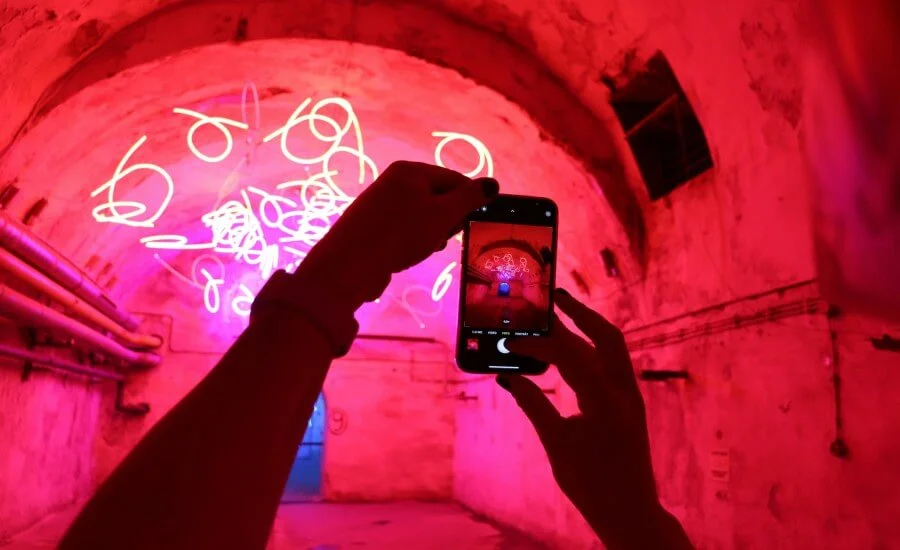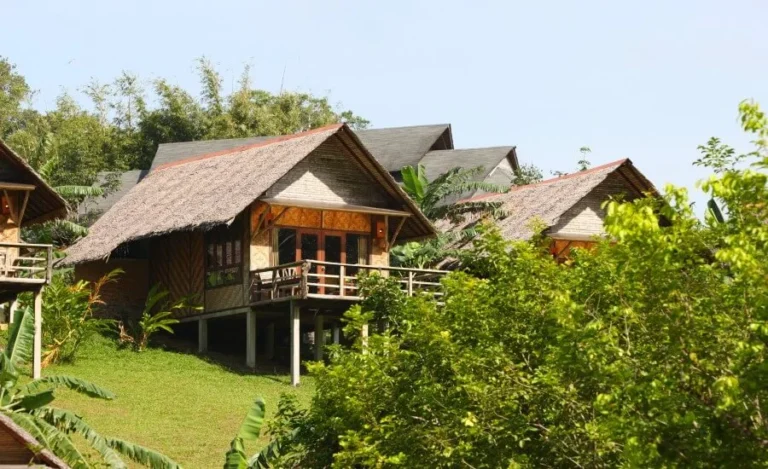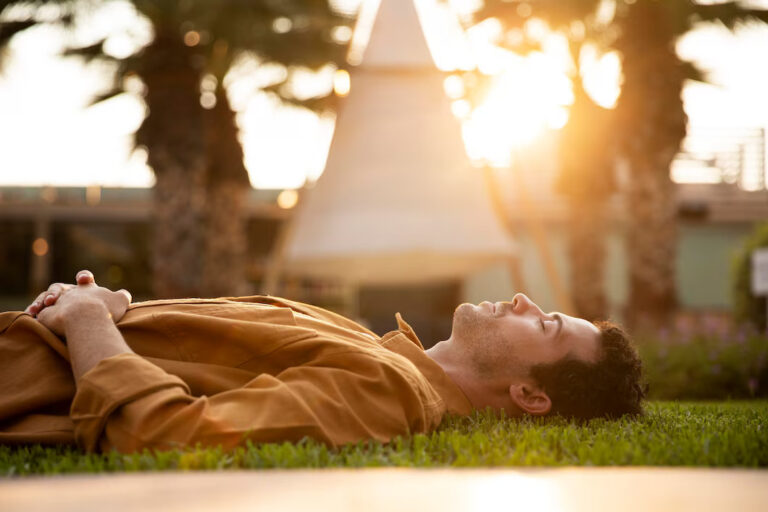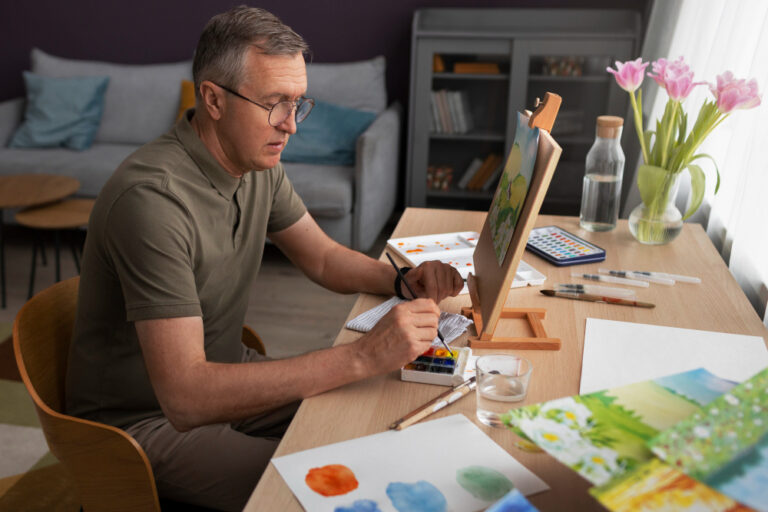
It sounded intriguing, didn’t it? Explore the Louvre from your living room, hike Machu Picchu via headset, wander the streets of Tokyo without leaving your sofa. The rise of virtual tourism, powered by increasingly sophisticated VR and AR technology, promises the world at our fingertips. We saw its appeal accelerate during global lockdowns – a way to satiate wanderlust when physical travel was impossible. Perhaps you’ve tried it – marveling at the 360-degree views, clicking on interactive hotspots, appreciating the sheer convenience. But did you also feel… something missing? A lingering sense that seeing isn’t the same as being?
Virtual tourism is undeniably a growing industry, projected to be worth billions, offering accessibility and ‘try before you buy’ previews. It has its place. But let’s be clear: it is not, and can never be, a true substitute for the real thing.
This guide explores The Rise of Virtual Tourism: Why You Should Still Travel In-Person. We’ll acknowledge the digital allure but firmly make the case for the irreplaceable, multi-sensory, deeply human experience of physically exploring our world, especially when approached with mindfulness and a willingness to disconnect.
The Armchair Allure: Understanding the Rise of Virtual Tourism

The surge in virtual tourism isn’t surprising. It taps into several modern desires and addresses real-world challenges. Accessibility is a major driver; virtual tours open up destinations to individuals with mobility issues, financial constraints, or time limitations that make physical travel difficult. For them, it offers a valuable window onto the world. Convenience and cost-effectiveness are also appealing – exploring multiple locations in a single day without jet lag or hefty travel expenses has obvious attractions.
Technological advancements play a huge role. Higher quality VR headsets are becoming more affordable, internet speeds are increasing, and content creators are producing increasingly immersive 3D and 360-degree experiences.
Furthermore, growing environmental awareness makes virtual travel seem like a ‘greener’ alternative, reducing the carbon footprint associated with flights and physical travel. Businesses also leverage it for marketing – offering virtual hotel tours or destination previews to entice real-world bookings. It can be a useful tool for planning, education, or satisfying curiosity about places one might never physically reach.
However, understanding why it’s popular also helps clarify what it isn’t. It’s primarily a visual and auditory simulation, an information delivery system, a convenient preview. It is not, fundamentally, embodied experience.
Pixels vs. Presence: The Irreplaceable Richness of Being There

The core difference between virtual and in-person travel lies in the chasm between simulation and embodied presence. Virtual reality can create impressive replicas, but physical travel engages your entire being in a way technology cannot (yet) mimic. Being physically present in a place involves navigating it with your body, feeling its atmosphere, interacting with its unpredictable elements, and experiencing it through the full spectrum of your senses.
Think about standing before the Grand Canyon. A VR headset might show you the view, perhaps even replicate the sounds of the wind. But it cannot replicate the feeling of that wind on your skin, the vastness pressing in on you, the dizzying sense of scale that makes your breath catch, the scent of dust and pinyon pine, the warmth of the sun, the texture of the rock under your hand.
Real travel is a holistic, somatic experience. It involves proprioception – your body’s sense of itself in space – navigating uneven terrain, feeling fatigue after a long walk, the simple act of physically moving through an environment.
Virtual tours present a curated, controlled version of reality. In-person travel involves confronting reality directly – the unexpected downpour, the crowded bus, the confusing street sign, the surprisingly delicious street food, the breathtaking view that appears suddenly around a bend. These imperfections and unpredictable moments are not flaws; they are integral parts of the authentic experience, fostering resilience, adaptability, and creating unique, personal memories. Presence isn’t just about what you see; it’s about how your entire being engages with the world around you.
A Symphony for the Senses: What Virtual Tours Can Never Capture

While VR technology excels at visual and auditory simulation, it falls dramatically short in engaging the full symphony of our senses, which are crucial to how we experience and remember places.
Smell & Taste: Virtual tours offer no equivalent to the aroma of spices wafting from a Marrakech souk, the salty tang of sea air on a coastal path, the unique scent of rain on dry earth (petrichor), or the complex bouquet of unfamiliar flowers. You cannot virtually taste the sharp sweetness of fresh mango from a street vendor, the comforting warmth of noodles from a bustling Bangkok stall, the specific terroir of wine tasted at a vineyard, or the simple perfection of bread fresh from a Parisian bakery. These senses are deeply tied to memory and emotion, creating connections that visual data alone cannot forge.
Touch & Texture: Imagine running your hand over the cool, ancient stones of a Roman ruin, feeling the rough bark of a giant sequoia, the surprising softness of moss in a forest, the warmth radiating from sunbaked sand, or the chill of glacier water. Virtual reality offers no tactile feedback, no sense of texture, temperature, or weight. This physical interaction grounds us in the reality of a place.
Atmosphere & Vibe: Every place has an intangible ‘feel’ – the energy of a bustling city square, the profound silence of a desert at night, the cozy intimacy of a traditional pub, the reverent quiet of an ancient temple. This atmosphere is a complex interplay of sensory input, cultural context, and human energy that cannot be digitally replicated. You have to be there to feel it.
Virtual tourism offers a picture, perhaps even a moving picture with sound. Real travel offers a multi-sensory immersion that engages your whole being, creating richer, deeper, and more lasting impressions.
Serendipity & Shared Smiles: The Unplannable Magic of Real Human Connection

One of the most vital and rewarding aspects of in-person travel is the potential for serendipity and genuine human connection – elements that are largely absent in the curated, isolated experience of virtual tours.
Virtual experiences are typically pre-programmed or guided. Real travel, especially when approached with openness, is full of unplannable moments. Getting slightly lost and asking a local for directions might lead to a friendly chat and a recommendation for a hidden gem cafe.
A delayed train could result in a fascinating conversation with a fellow traveler. Stumbling upon a local festival, joining an impromptu game of football in a park, or simply exchanging smiles with a shopkeeper – these spontaneous encounters enrich our journeys immeasurably. They remind us of shared humanity beyond cultural differences.
Virtual tours lack this element of chance and genuine interaction. You cannot share a spontaneous laugh with a virtual vendor or feel the warmth of unexpected hospitality through a headset. Real travel involves navigating social nuances, practicing cultural sensitivity firsthand, and building bridges through direct communication (even non-verbal).
These interactions foster empathy, challenge preconceptions, and offer profound learning opportunities that simply cannot be replicated through a screen. The shared glance, the moment of understanding despite language barriers, the kindness of a stranger – these are the soulful souvenirs of authentic travel.
Disconnecting to Truly Arrive: The Power of Unplugged Immersion

Here lies a fundamental paradox: virtual tourism requires you to be plugged in, tethered to technology, staring at a screen. In contrast, authentic, in-person travel offers the invaluable opportunity to truly disconnect – from the demands of your digital life and even from the mediating layer of technology itself – allowing for deeper immersion and presence.
When you travel physically, you can make the conscious choice to put the phone away. You can navigate using your senses and a physical map. You can resist the urge to immediately share every moment online and instead live it fully.
This digital disconnection enhances mindful travel immensely. Your attention is freed to engage directly with your surroundings, to notice the details, to be fully present in conversations, to simply absorb the atmosphere without the constant pull of notifications.
Virtual tourism, by its very nature, cannot offer this benefit. It is the screen. It keeps you physically in one place while simulating another, creating a disconnect between mind and body, between virtual stimulus and physical reality.
In-person travel, especially when approached mindfully and with intentional disconnection, allows you to integrate mind, body, and environment. You arrive not just physically, but mentally and emotionally, fully present in the place you chose to explore. This state of unplugged presence is where the richest experiences and deepest connections are often found.
The Rise of Virtual Tourism: Why You Should Still Travel In-Person

So, while acknowledging The Rise of Virtual Tourism and its potential uses for accessibility, planning, or education, the verdict remains clear: you should still travel in-person. The limitations of virtual experiences highlight the profound, irreplaceable value of physical exploration.
Virtual tours can offer a glimpse, a taste, an intellectual understanding. But they cannot replicate the full-sensory immersion, the emotional resonance of atmosphere, the character-building challenges, the joy of serendipitous discovery, or the power of genuine human connection that define authentic travel. They cannot provide the feeling of accomplishment after navigating a foreign city, the taste of food shared with new friends, or the perspective shift that comes from truly stepping outside your familiar world.
Perhaps virtual tourism can serve as an appetizer, sparking curiosity or aiding preparation. Maybe it’s a valuable tool for those genuinely unable to travel physically. But it should never be mistaken for the main course. The richness, the unpredictability, the sheer aliveness of being physically present in a new place engages us on a level technology cannot reach. It’s the difference between reading the menu and savoring the meal.
Common Concerns & Solutions: Virtual vs. Real Travel

Arguments often arise favoring virtual travel, particularly regarding cost, accessibility, and environmental impact. While valid points, they don’t negate the unique value of physical travel:
Concern 1: “In-person travel is expensive; virtual is cheap or free.”
- Solution/Counterpoint: While true that major international trips are costly, in-person travel doesn’t have to be. Micro-adventures, local explorations, staycations, or choosing budget-friendly destinations and travel styles (like backpacking or slow travel) offer accessible ways to experience the real world. Furthermore, the value derived from deep immersion and connection in real travel often justifies the cost in ways a virtual tour cannot match. Invest in fewer, richer real trips rather than many superficial virtual ones.
Concern 2: “Virtual travel makes impossible destinations accessible (e.g., for mobility issues).”
- Solution/Counterpoint: This is a key strength of virtual tourism and should be celebrated. It provides invaluable access for those unable to travel physically. However, for those who can travel, it shouldn’t replace the goal of real-world experience. It can supplement, inspire, or be an alternative when physical travel is truly not an option, but the limitations remain.
Concern 3: “In-person travel has a significant environmental footprint; virtual is ‘greener’.”
- Solution/Counterpoint: This is complex. While flights have a high carbon footprint, sustainable in-person travel practices exist: choosing overland routes (trains/buses), staying longer in one place (slow travel), supporting eco-lodges and conservation-focused operators, offsetting carbon, and making conscious consumption choices. Ethical in-person tourism can also directly fund conservation and support communities reliant on protecting their environment. Virtual tourism still requires energy for servers, devices, etc. The solution isn’t necessarily no travel, but more responsible travel.
Concern 4: “Virtual tours are safer and avoid the hassles of real travel (delays, crowds, etc.).”
- Solution/Counterpoint: While true that virtual tours eliminate certain risks and inconveniences, overcoming minor challenges and navigating the unpredictable aspects of real travel builds resilience, adaptability, and problem-solving skills. The ‘hassles’ are often part of the authentic experience and lead to unexpected growth or memorable stories. Safety in real travel is managed through preparation and awareness.
Before You Go Checklist: Planning Mindful In-Person Travel

To maximize the unique benefits of real travel, approach your planning and journey mindfully:
- Define Your Intention: Why are you really going? What kind of connection or experience are you seeking beyond just seeing sights?
- Choose Quality over Quantity: Opt for fewer destinations visited more deeply, rather than a rushed multi-stop tour. Embrace slow travel principles.
- Research Beyond Landmarks: Learn about the local culture, etiquette, basic phrases, history, and contemporary life.
- Pack for Presence: Include items that encourage engagement with the real world (journal, sketchbook, physical book, comfortable walking shoes) and minimize reliance on excessive tech.
- Plan for Disconnection: Decide on your tech boundaries. Inform others of potentially limited contact. Download essential info offline. Pack analog backups (map, phrasebook).
- Prioritize Authentic Experiences: Look for opportunities to engage with local culture respectfully (markets, local eateries, community-based tours if ethical).
- Leave Room for Serendipity: Don’t overschedule. Allow time for spontaneous wandering, unexpected encounters, and simply sitting and observing.
- Engage Your Senses: Make a conscious effort to notice the smells, sounds, tastes, textures, and atmosphere of the places you visit.
- Travel Sustainably: Choose eco-friendly transport and accommodation where possible. Support local businesses. Follow Leave No Trace principles.
- Practice Gratitude & Reflection: Take time during and after your trip to appreciate the experience and reflect on what you’ve learned and felt.
Don’t Just See the World, Feel It

The digital age offers incredible tools, and virtual tourism is a fascinating development with specific applications. But technology remains a simulation, a representation of reality, not reality itself. The richness of life, the depth of understanding, the spark of genuine connection – these are found in embodied experience. In-person travel, with all its glorious imperfections, challenges, and sensory details, engages us wholly in a way pixels on a screen never can. It pushes us to grow, connect, and truly feel the world.
While virtual tours might let you look at the world from your armchair, real travel invites you to step into it. It calls you to taste the unfamiliar food, navigate the bustling street, feel the ancient stone, exchange a smile with a stranger, be humbled by a vast landscape, and return home not just with photos, but with a changed perspective.
So, explore the virtual world if you wish, use it as a tool for inspiration or access. But never let it replace the profound, transformative power of stepping out your door and experiencing the real, tangible, unpredictable, and endlessly fascinating planet we inhabit. Don’t just see the world – go out and touch it, taste it, smell it, listen to it, and truly feel it. The journey awaits.






